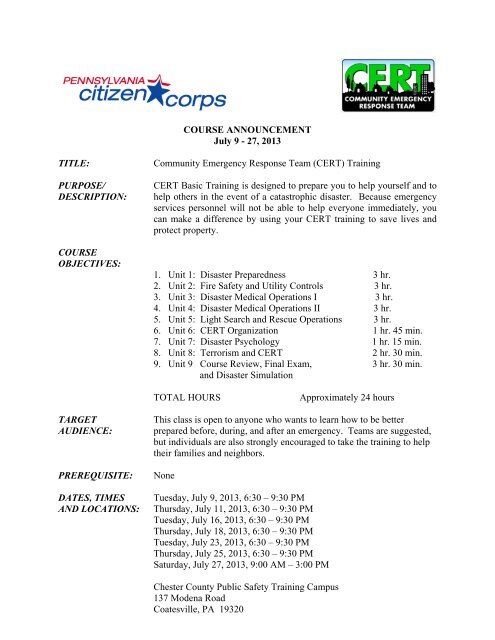
- Emergency Response Plans
- Emergency Response Guide Pdf

1.2 Emergency Preparedness & Response: Key Definitions and Concepts 1.2.1 What is an Emergency? 1.2.2 Disaster Typologies 1.2.3 Emergency Phases 1.2.4 Understanding Disaster Prevention, Mitigation and Preparedness 1.2.4.1 Disaster Prevention 1.2.4.2 Disaster Mitigation 1.2.4.3 Disaster Preparedness 1.2.5 Cross-cutting Themes in Emergency. 7th Grade-Unit 4/Lesson 4: Emergency Response. Copy this to my account; E-mail to a friend; Find other activities; Start over; Help; Log in or credit. Copy the vocabulary into foldable. A B; first aid: The immediate care given to someone who becomes injured or ill until regular medical care can be provided.
Lesson 3.2.5 Concept of Operations for Healthcare Emergency Response. And Recovery: Incident Operations Stage –Operations Section. Actions in Continuity and Medical Surge 3-119. Lesson 3.2.6 Concept of Operations for Healthcare Emergency Response.
Officers of the Noblesville, Indiana, Police Department's Emergency Response Unit

An Emergency Response Unit is a name for a law enforcement or other civil government entity that is trained and equipped to respond quickly to emergency situations. In some instances, such a designation is given to a Special Weapons and Tactics unit, although it can also be used for units intended to respond to natural disasters and other situations not requiring the use of weaponry.
Emergency Response Plans

Examples include:

- Garda Emergency Response Unit, a specialist armed tactical intervention team of Ireland's police
- Emergency Response Unit (IFRC), pre-trained teams of specialist volunteers of the International Federation of Red Cross and Red Crescent Societies
- Emergency Response Unit (Cyprus), a division within the Cyprus police
- Emergency Response Unit (Iraq), in Iraq there are two such units, a counter-terrorism unit of the Iraqi Police, and another of the Iraqi Defense Ministry.
- Counter Terrorism Centre (Hungary)
Retrieved from 'https://en.wikipedia.org/w/index.php?title=Emergency_Response_Unit&oldid=922343141'
LAFD Spokesperson: Erik Scott
LOS ANGELES - In the Los Angeles Fire Department's continuing efforts to meet the challenges of our increasing EMS call load and the increasing number of homeless individuals, our EMS Bureau is in the process of implementing a pilot program called the LAFD SOBER (Sobriety Emergency Response) Unit. This pilot project is anticipated to be staffed by a Firefighter, working alongside a Los Angeles Homeless Services Authority (LAHSA) outreach worker.
The LAFD, in collaboration with the County Department of Health Services (DHS), is working on plans to bring publicly intoxicated patients to a new Sobering Center located in Fire Station 9’s district (Skid Row area), rather than transporting these patients to an emergency department (ED). It is anticipated that the LAFD SOBER Unit pilot will begin in Fall 2016, which will be in coordination with the future opening of the new DHS Sobering Center.
The SOBER Unit is a 12 month pilot program, which will identify public and serial inebriates and perform a medical clearance exam in the field to identify any acute medical issues that warrant ambulance transport to an ED. If the patient is medically cleared, the SOBER Unit will transport these individuals to the Sobering Center, where the patient can be monitored while they get sober, and then get placed into an appropriate detox program and transitional housing.
This innovative pilot program will provide our department with the opportunity to staff an experimental new resource to get public and serial inebriates the help that they need, while decreasing the number of responses and ambulance transports for these patients, many of whom are EMS 'super users', residents who summon emergency medical services many times a month - and sometimes several times each day.
A detailed analysis of LAFD data shows the top 40 super users were responsible for approximately 2,000 calls to the City's 9-1-1 system last year. These callers, often experiencing the chronic effects of drug and alcohol abuse, have historically been taken to a hospital emergency room by paramedic ambulance, where following elaborate tests, further care offered by nurses and physicians is often refused. Many of these patients depart the hospital, only to return the same day in a ceaseless cycle that limits the availability of both paramedics and critically needed hospital beds. The cascading effect has placed an unnecessary burden on the region's health network. This program will also help free up ED beds, which decreases time firefighters are waiting for a ED bed to become available, therefore expediting firefighters availability to handle additional 9-1-1 calls quicker.
Emergency Response Guide Pdf
Our hope is this innovative program will make a significant difference for the most vulnerable adults in our community, and also have a significant positive impact on our busiest resources in the field.






Comments are closed.